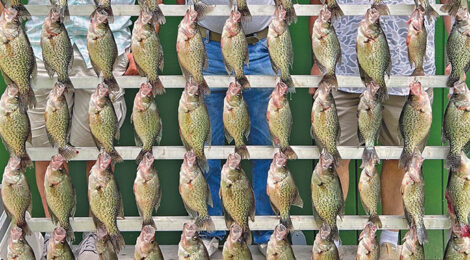
Testing the Limits of FFS
Texas biologists say technology, pressure can’t hurt crappie numbers, some guides favor reduced limit.
Story and photography by Matt Williams
Mississippi may be a long way from Texas, but big news surfaced in a local newspaper there that is sure to spur some interest among crappie buffs across the Lone Star state and beyond. The story centers on the use of forward-facing sonar.
In June, Clarion Ledger outdoors writer Brian Broom reported that Mississippi’s Commission on Wildlife, Fisheries and Parks voted to cut daily limits at four of the state’s more popular crappie lakes — Grenada, Enid, Sardis and Arkabutla Lake. All are well known for producing big numbers of crappie with thick shoulders.
According to the story, the main reasons for the reduction hinge heavily on the growing popularity of forward facing sonar (FFS), and budding concerns among state fisheries biologists and anglers alike that the technology has made catching crappie so easy they believe it could damage the fisheries without measures to help curtail the harvest of large fish.
Daily crappie limits on the aforementioned lakes were slashed from 15 crappie to 10 over 12 inches per angler per day, and no more than 25 crappie per boat, per day, according to the newspaper report. The new limit went into effect on July 24.
Keith Meals, a regional fisheries biologist with the Mississippi Department of Wildlife, Fisheries and Parks, says the changes were implemented following a three-year study that showed forward-facing sonar usage among anglers on three of the lakes — Sardis, Enid and Grenada — jumped significantly over the course of the study period.
************************************************************************
To read more, click here to SUBSCRIBE







